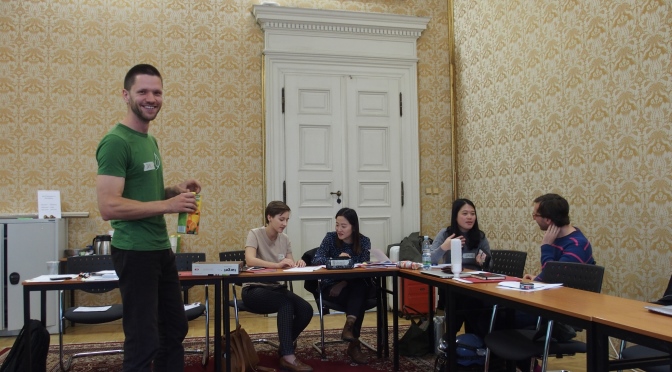This was the second year that the MA in Applied Economics (MAE) program, which aims to develop data-driven changemakers, has opened with Discovery Week — a very intensive and fascinating start to the program. Almost all of this year’s students arrived in Prague a week early to participate in Discovery Week, and they are sure that it was the right decision.
Introduction
Discovery Week aims to teach the MAE newcomers the Human-Centered Design approach through a real-life project. It also helps students get to know each other before the start of their regular classes, and provides a smooth transition into their intensive studies. Students have one week on a real-life problem in groups, presenting their solutions to the client on the last day.
This year, the students solved a problem for “Asistence” — a non-profit provider of social services for handicapped people in Prague. The stated problem was: “We want to attract more clients to our programs”. Interestingly, the MAE students discovered another sub-problem: the students suggested that “Asistence” could pay more attention to a client management system and broaden their focus to pre-service and post-service activities.
In the end, it was not only a task, but a life lesson. The working relationship that developed between the students and clients across the week was extremely positive, and the experience was very much appreciated by everyone involved.
Human-Centered Design (HCD)
From the first day of the program, students are taught the applied Human-Centered approach.
Human-Centered Design is a problem-solving approach that involves user perspective in all steps of the process. It was taught by external expert Dalibor Tomko, who has several years of experience in consulting.
Following the HCD, concept, students took these steps to solve the client’s problem:
1. Went deeply into the problem. Details were provided by Asistence;
2. Interviewed the employees and clients of Asistence, and their parents;
3. Defined the problem;
4. Brainstormed and created a range of solutions;
5. Mocked-up 3 to 5 ideas;
6. Showed the ideas to the client to collect feedback;
7. Presented their final suggested solution on the last day of
Discovery Week.
Contribution and Summary
The students took this challenging task very seriously, and in only one week were able to design a solution. This demonstrates that our new students are both ambitious and impact-oriented. The MAE team is happy that “Asistence” has already implemented one of the students’ ideas.
Feedback
Paul Whitaker (MAE faculty member):
“Right from the beginning I could see the students trying to find ways of gathering and analyzing data about the organization and their clients, already showing their determination to become data-driven change makers.“
Dalibor Tomko (HCD instructor):
“Given the fact that the majority of the students hadn’t had experience communicating with handicapped people as well as being new to Human-Centered Design, they really succeeded. The students gained from the approach what they needed to learn, and produced positive results. And as long as they help employees think from different directions and give them some fresh perspectives, they basically help them think out of the box about their issues.
Ultimately, the client was happy with the solutions. That means that the project achieved its goals.”
Marek Novosad (MAE student):
“It was a great way to be introduced to our classmates and it was wonderful to tackle something completely different from the study of economics. The work was very much applied and I can use the Human-Centered Design approach in many fields.”
If you want to learn to use Human-Centered Design to solve real-life problems, join our MAE program in 2018/2019! Fill in an application form now to be eligible for reduced tuition rates.
